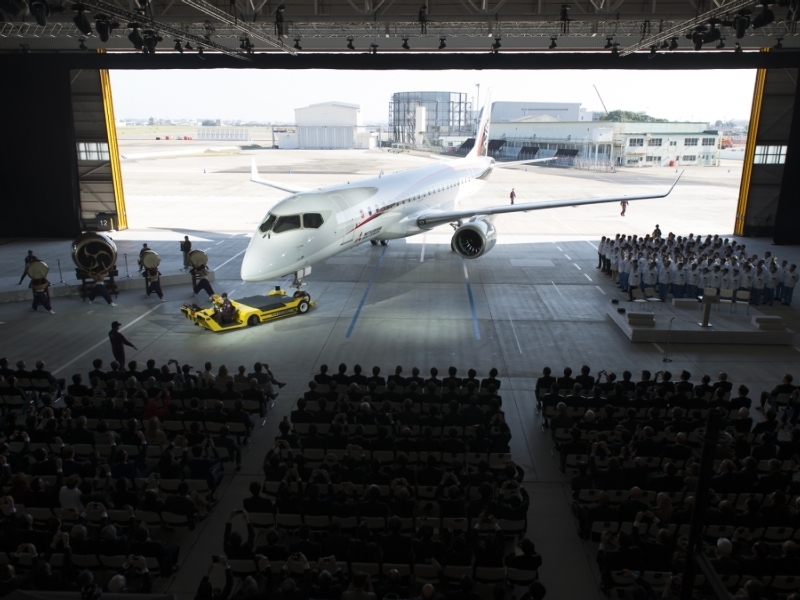The Mitsubishi Regional Jet (MRJ) seems to be back on track. The 70/90-seat aircraft, powered by Pratt & Whitney geared turbofan engines, was already lagging some four years behind its original schedule when it completed a successful first flight on 11th November last year.
So there was some consternation when Mitsubishi Aircraft Corp (MAC) announced just before Christmas, after three test flights, that first delivery was being pushed back by one further year to resolve unspecified “issues”. Press reports suggested structural problems had been identified on the airframe.
MAC subsequently explained that static testing on a dedicated airframe had revealed a structural weakness under ultimate loading conditions (1.5 times the maximum load expected in service). Structural reinforcements were added to resolve the problem, clearing the way for a resumption of flight testing with the modified first prototype on 10th February. A second prototype has also been modified and is expected to fly shortly. A further three prototypes are currently in final assembly.
Further reassurance came at the Singapore Airshow, when Miami-based leasing company Aerolease Aviation signed a Letter of Intent (LoI) for 10 firm MRJ 90s with an option for an additional 10. Deliveries to Aerolease Aviation — the first lessor to order the plane — are scheduled to begin in 2018. The MRJ order book currently totals 23 firm orders with 170 options.
More recently, on 7th March, MAC announced a major organizational shakeup, with two senior executive apppointments: Shigefumi Tatsumi, who becomes Senior Executive VP, Head of Seattle Engineering Center and COO, Mitsubishi Aircraft Corporation America, Inc.; and Akihiko Ishikawa, who will be Senior Executive VP, Head of Moses-Lake Flight Test Center and COO Mitsubishi Aircraft Corporation America, Inc.
These new appointments are accompanied by a number of structural changes. The existing quality assurance division is being abolished and its functions divided between the newly established flight safety management office and quality assurance office. Engineering and aftermarket activities are also being reorganized, with the creation of a new Moses-Lake Flight Test Center and a “more horizontal” customer support structure.

